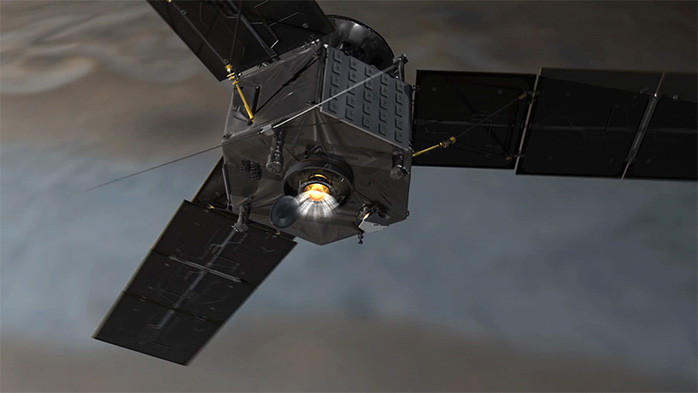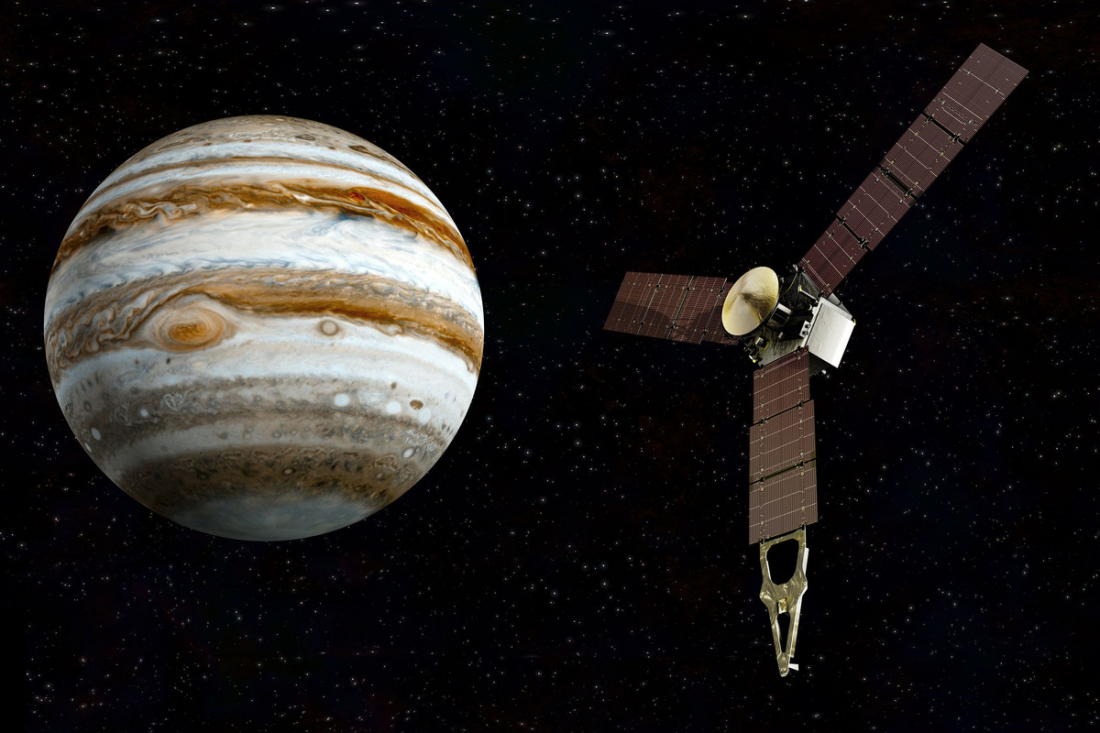NASA's Juno spacecraft left Earth on August 5, 2011, to begin its 1.74 billion mile journey to Jupiter, the fifth planet from the sun and the largest in our solar system. If all goes as planned, Juno will insert itself into Jupiter's orbit late this evening to begin its 20-month study.
Juno is significant for a number of reasons. If successful, it'll mark the first time a spacecraft has orbited Jupiter in more than a decade. Juno is also the fastest spacecraft to enter orbit around a planet at 130,000 miles per hour.
That speed is one of the most nail-biting moments of the mission. In order to enter Jupiter's orbit, Juno will need to fire its main engine for at least 35 minutes to slow the craft down enough for Jupiter's gravitational pull to capture it.
Should the main engine shut off early, there's still a chance Juno could end up in Jupiter's orbit, just not the one NASA is shooting for. If the engine doesn't fire at all, Juno will sail past Jupiter and the mission will be a total wash. Here's to hoping the latter scenario doesn't happen.
Juno's mission goals are aplenty. Chief among them is to improve our understanding of the formation, structure and evolution of the gas giant. Its instruments should be able to tell us whether or not Jupiter has a rocky core and even provide clues regarding how our solar system was formed. Even if you aren't into science, Juno is worth getting excited over.

NASA TV coverage of the orbit insertion begins at 10:30 pm EDT. At 11:18 pm, Juno's engine burn begins and by 11:38 pm, it will have burned long enough to put the spacecraft into orbit. Of course, we won't know if the mission was a success or not until nearly an hour later as it takes about 48 minutes for radio signals to reach Earth.
If successfully inserted, the spacecraft will orbit Jupiter 37 times during the nearly one-and-a-half-year science phase of the mission.
